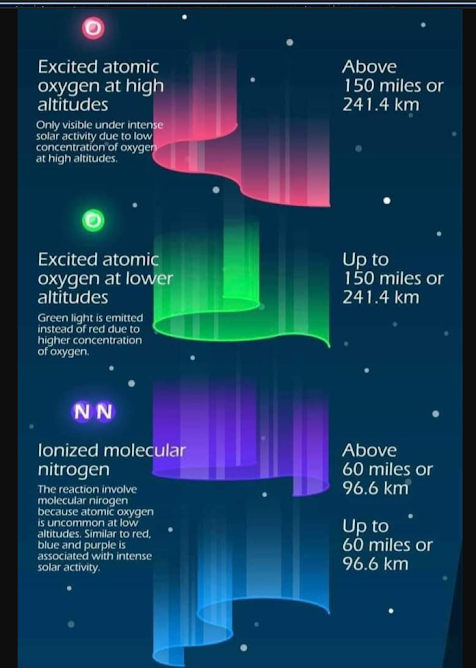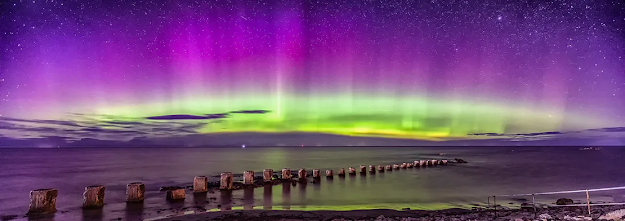Exploring the Milky Way's evolution has become more exciting thanks to the Gaia mission. Let’s break down what this revolutionary mission reveals about our Galaxy's past!
Summary of the Blog:
The Gaia mission has transformed our understanding of the Milky Way’s evolution by mapping over a billion stars. It reveals the galaxy’s hidden history, particularly through the discovery of the Gaia-Sausage-Enceladus (GSE) merger, which occurred 8–11 billion years ago and significantly shaped the inner stellar halo. Gaia's precise measurements provide insights into stellar orbits and chemical compositions, allowing scientists to distinguish between stars formed within the Milky Way and those from GSE. This mission enhances our knowledge of the Milky Way's structure and evolution, offering a clearer picture of the cosmic events that have shaped our galaxy over billions of years.
In this blog, we will explore several key topics related to the Milky Way’s evolution. First, we’ll examine the stellar halo and its role as a fossil record of past mergers. Then, we will discuss the Gaia-Sausage-Enceladus (GSE) merger, highlighting the evidence for its significance in shaping the Milky Way’s structure. Next, we’ll analyze the chemical signatures of different stellar populations, which reveal their origins and formation histories. Finally, we’ll showcase how Gaia's innovative data techniques have revolutionized galactic archaeology, enhancing our understanding of the Milky Way’s formation and broader galaxy development. Join us as we uncover this fascinating narrative!
Introduction: The Hidden History of the Milky Way
Figure 1: Artistic Representation of Milky Way
The Milky Way, like a cosmic archaeologist, carries the remnants of its formation and evolution (Fig.1). Over billions of years, it has consumed smaller galaxies, leaving behind debris in the form of stars and dark matter. This "stellar halo" acts like a fossil record, telling the story of these galactic mergers and the Milky Way’s dynamic history. Stars act as fossil records of the past, preserving information about their origins, motions, and chemical compositions.
Figure 2: Gaia Observers Milky Way
In this image, milky way can be seen as a brownish band in the background with Gaia Satellite in the foreground.
Image Source : Wikimedia Commons
The Gaia Mission, launched by the European Space Agency, has transformed how we study these remnants (Figure 2). By providing highly detailed maps of the positions, motions, and chemical compositions of over a billion stars, Gaia gives scientists an unprecedented view of our Galaxy Milky way.
Key Questions for Discussion:
- How has the Milky Way grown over billions of years?
- What role do mergers, like Gaia-Sausage-Enceladus (GSE), play in this process?
- How does the Gaia mission allow us to reconstruct the Galaxy’s history?
- Key Discoveries in Galactic Archaeology
1. The Stellar Halo: A Galactic Fossil Record
The stellar halo is a diffuse, spherical region of stars surrounding the Milky Way. It holds clues about the galaxies our Galaxy devoured over time.
Pre-Gaia Observations:
Earlier studies provided hints of a stellar halo, but the data was sparse and incomplete. Astronomers used models to guess the properties of these stars, often based on limited samples from telescopes like SDSS. Also, the most studies relied on indirect methods to infer the orbits and origins of stars.
The Gaia Revolution
The Gaia mission provides precise astrometric data, including positions, proper motions, parallaxes, and radial velocities for over 1 billion stars, enabling detailed reconstructions of their orbits and origins.
Post-Gaia Era:
With Gaia’s precise data, astronomers discovered that most of the inner stellar halo (within 20 kpc of the Galactic center) is dominated by debris from a single massive dwarf galaxy, referred to as Gaia-Sausage-Enceladus (GSE).
2. The Discovery of Gaia-Sausage-Enceladus (GSE)
Figure 3. A visualization of the moment of impact between the MW’s progenitor and the Gaia Sausage (or Gaia-Enceladus) (credit: Instituto de Astrofísica de Canarias).
The GSE is one of the Milky Way’s largest mergers, occurring about 8–11 billion years ago (Figure 3). Its debris dominates the Milky Way’s inner stellar halo (r < 20 kpc). Here’s why it’s important:
Key Evidence for GSE:
1. Radial Orbits of Stars:
GSE stars exhibit highly eccentric orbits, with elongated paths that repeatedly bring them close to the Galactic center. The radial velocity distribution of GSE stars shows two prominent "lobes," indicating their highly eccentric motion. The symmetry of these lobes supports the idea of a single progenitor contributing to the inner halo.
2. Chemical Fingerprints:

Figure3. X-axis represents Fe/H and Y-axis represents [α/Fe] in upper panel and number of stars in the lower panel. Black Dots represent the milky way stars that formed in-situ while the blue stars are associated with GSE. Solid (dotted) lines show the distribution of [Fe/H] when high-α stars are excluded (included). Image Credits:
arXiv:2402.12443
Chemical composition plays a vital role in identifying stellar populations. Stars from the Milky Way and accreted galaxies differ in their ratios of heavy elements, such as alpha-elements (like magnesium) and iron.
Stars with higher [Fe/H] are more metal-rich, meaning they formed later in a galaxy’s history when there was more iron available from previous generations of supernovae. [α/Fe] is the ratio of alpha elements (α) to iron (Fe). Alpha elements include magnesium, silicon, calcium, and oxygen, which are primarily produced by massive stars in Type II supernovae. Higher [α/Fe] Indicates rapid star formation because massive stars dominate in enriching the environment before Type Ia supernovae contribute significant iron.
Figure 3 shows the metallicity distribution with [Fe/H] vs. [α/Fe].
The distribution of stars in chemical space ([Fe/H] vs. [α/Fe] shows distinct groups. This allows astronomers to separate in-situ stars (formed in the Milky Way) from accreted stars like those from GSE. Milky Way stars have higher [Fe/H], varying [α/Fe] from GSE stars with lower [Fe/H], higher [α/Fe] This chemical distinction helps identify which stars belong to the Milky Way and which came from GSE.
3. Apocenter Pile-Up:

Figure4. The figure represents the variation of density with distance. Apocenter distributions (Fig. 8) confirm that GSE debris dominates within ~20 kpc.Image Credits:
arXiv:2402.12443 In a galaxy, the apocenter pile-up is a phenomenon that can lead to distinctive features in the stellar halo. This occurs when stars build up at the apocenter of a common dwarf progenitor, resulting in a broken density profile. The stellar debris deposited during this event has similar apocenters, which is responsible for the stellar halo break. The apocenters of GSE stars cluster around ~20 kpc, aligning with the break in the stellar halo’s density profile. Figure 4 in the paper shows the apocenters of GSE stars overlap with the observed density break, reinforcing the idea that GSE debris dominates the inner halo.
3. Globular Clusters (GCs) and GSE
GCs are dense star clusters often associated with their host galaxies. In the Milky Way, they provide additional clues about past mergers. Several GCs on highly eccentric orbits are linked to GSE.
These clusters share orbital characteristics with GSE stars, confirming their common origin.
Figure 7 in the paper shows the peri- and apocenter distances of GSE’s GCs overlap with those of GSE stars, indicating a shared history.
4. Implications of GSE for Galactic Evolution
- GSE was the last major merger, significantly shaping the Milky Way’s inner halo.
- Its debris dominates the inner halo (r < 20 kpc).
- The GSE merger influenced the Milky Way’s dark matter halo, contributing to its current structure.
- GSE brought globular clusters (GCs) into the Milky Way.Figure Reference (Fig. 7 in paper): Many GSE globular clusters have highly eccentric orbits, consistent with GSE stars.
5. How Gaia Revolutionized Galactic Archaeology
- Before Gaia, astronomers relied on indirect methods and limited data to study the Galaxy’s structure. Now, Gaia provides:
- 6D Maps: Positions, velocities, and chemical compositions of stars.
- High Precision: Data that allows scientists to track the orbits of stars and identify their origins.
- Complementary Surveys: Combining Gaia data with spectroscopic surveys like APOGEE and SDSS reveals even more details about star chemistry and motion.
Why This Matters
- Understanding the Milky Way’s formation gives us a glimpse into the broader universe:
- The Milky Way’s mergers are part of a universal process of galaxy formation.
- Stellar motions reveal the distribution of invisible dark matter in the Galaxy.
- The chemical fingerprints of stars teach us about the life cycles of galaxies.
The Gaia mission has opened a new chapter in studying the Milky Way’s history. By combining stellar motion, chemistry, and models, scientists can reconstruct the story of our Galaxy’s growth and evolution.
References :
[1] Galactic Archaeology with Gaia, Jul 2024, Alis J. Deason , Vasily Belokurov

















































